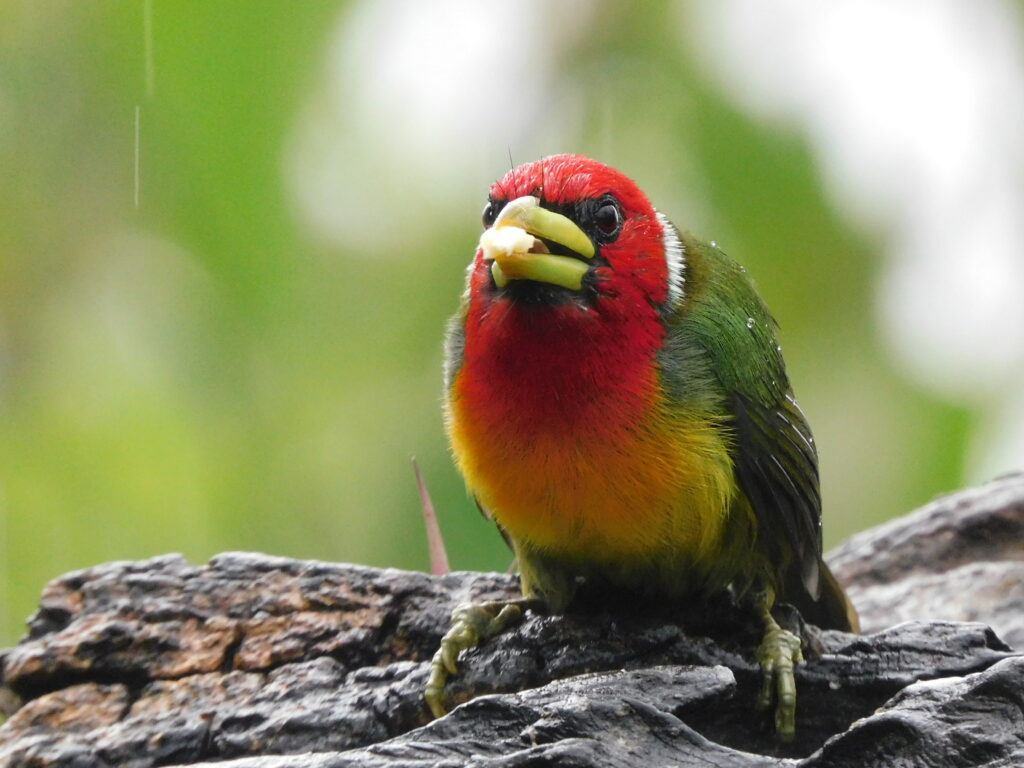
Every year, land masses stretching from Canada down to the tip of Chile exhibit an extraordinary phenomenon – avian migration. In the autumn, when the air temperatures begin to cool in the upper parts of North America and food sources become scarce, birds find themselves lacking consistent nutrition. Being animals of flight, they have a convenient yet tremendous way to gain access to constant meals; only after a quick 2,000 mile one way trip. Down in Costa Rica, about 5 billion individual migrant birds pass through the country yearly from these upper land masses, making them an integral part of the ecosystem. Currently, the migrants are on display alongside the resident bird species, creating mixed species flocks that forage together. There’s about four months left of their presence here in the tropics, before they head back up north around April (when then, the South American migrants will come up).
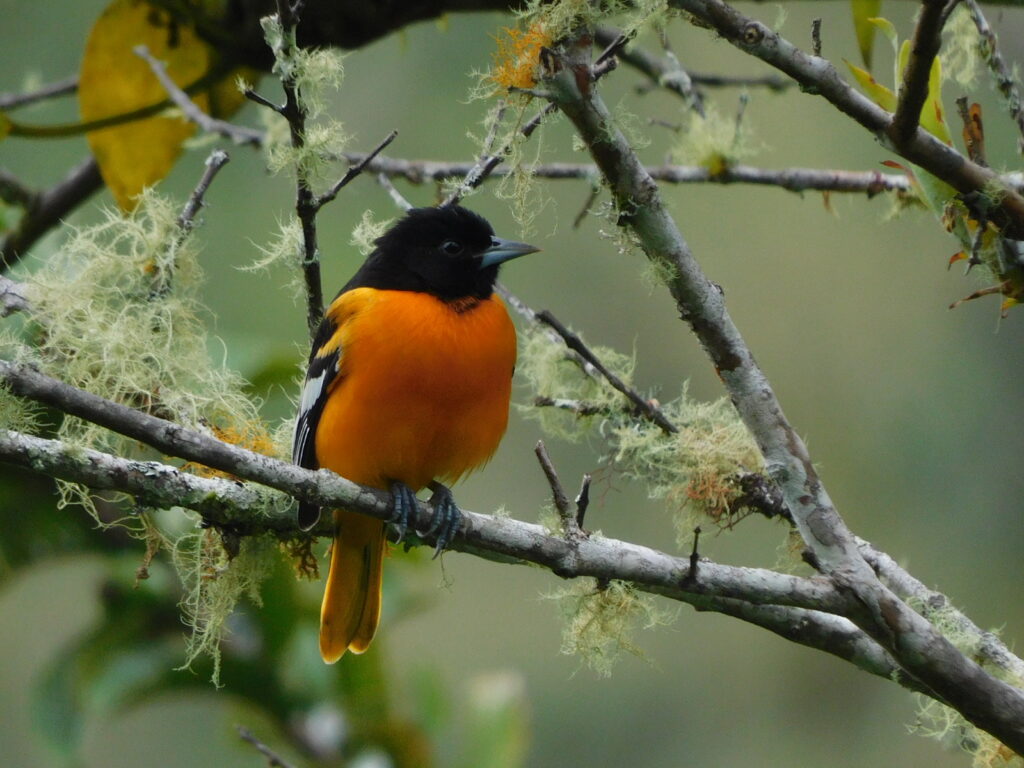
But with so many different species of birds that arrived in the fall, there needs to be adequate sources of food to maintain such an increase of abundance in a relatively short period of time. Some species are specialized to eat fruits, while others are insectivores – but the competition is high. Is it possible that a single forest could provide all the necessary nutrients even after a massive influx of population?
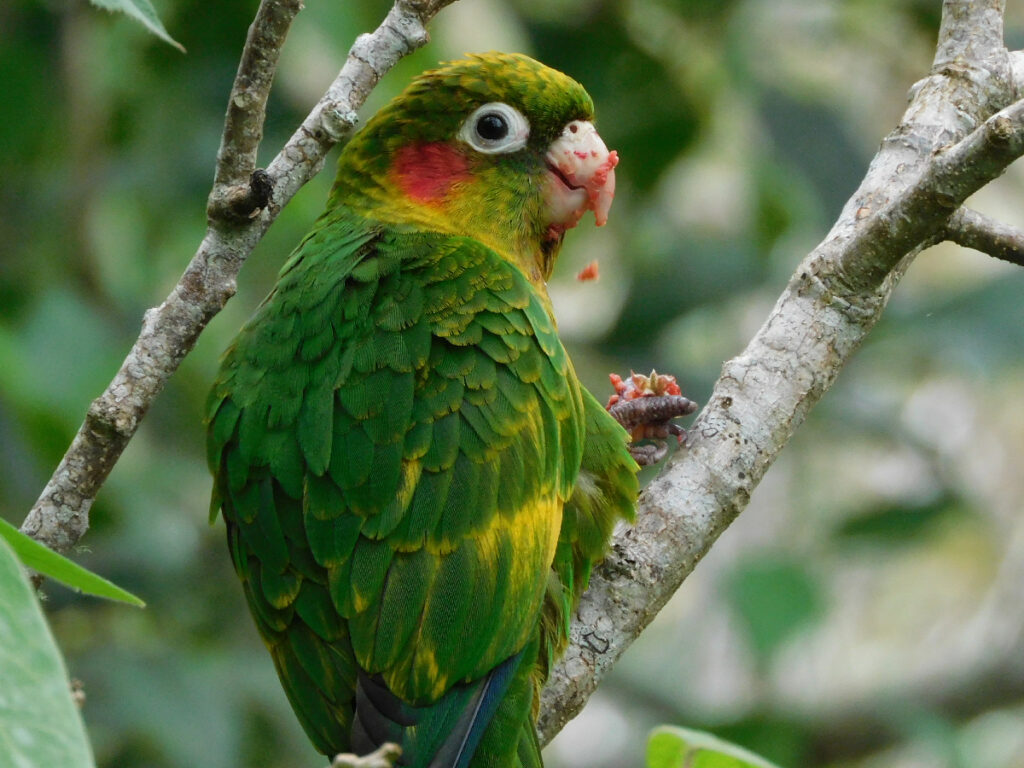
Here at Cloudbridge, we have the potential to host 300+ species of birds, including both migrants and residents. While this number fluctuates year round, the forest has less of a dramatic change from year to year. As most of this property was once pastureland, there’s varying levels of forest succession – planted, naturally regenerated, and mature forest. The diversity of the forest types coupled with the current inundation of bird abundance is what led to one of our researchers seeking to find relationships between these factors.
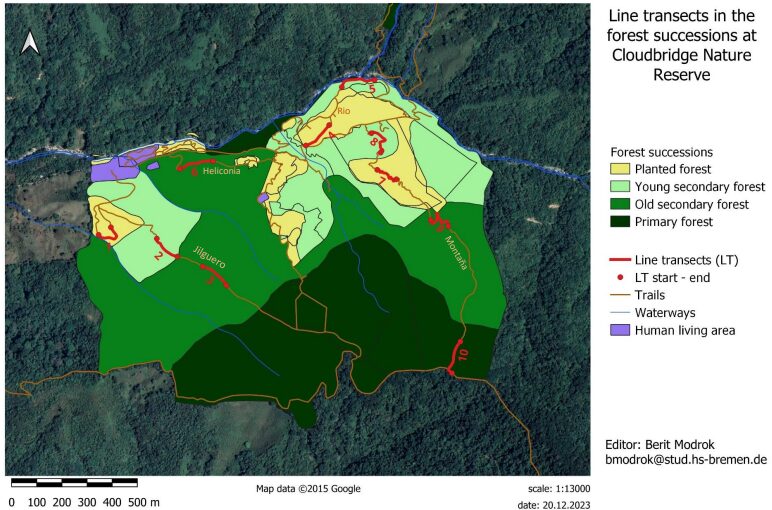
Researcher Berit Modrok from Hochschule Bremen City University of Applied Sciences in Germany was keen to determine what exactly is the relationship between forest type and bird composition, with a key focus on the role that the migrants play during their time here. Berit had the fortuitous opportunity of studying bird compositions pre- and post-migration, allowing her to see the differences of forest preference for migrants or residents, as well as how the diversity is spread throughout the reserve. Over a four month internship, Berit was able to investigate a myriad of variables on top of the two main focus points (which includes things like activity levels at specific times of day, abundance according to location in the reserve, composition of the endemic species, etc). Overall, there were some interesting results in how the migrant species and resident species were distributed in the forest. To discover what Berit was able to conclude from her study, you can read her paper here.
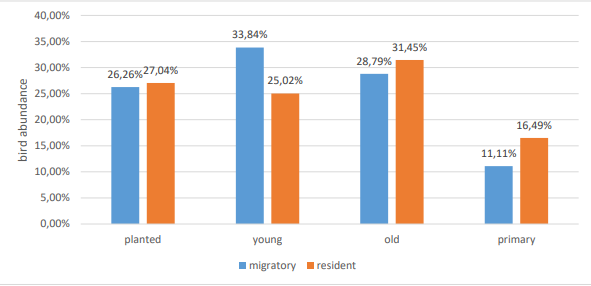
Suggested Reading:
- It can seem pretty unbelievable that these small animals can travel such large distances, and not even just once, but every year. How do they know where to migrate? There are a few key variables that aid in a successful migration, making birds expert travelers.
- Many people don’t know, but humans have become a hindrance to bird migration due to light pollution. As migration can also happen during the night, artificial lights are extremely disorientating to birds when trying to navigate their direction – so much so that the UN has established a World Migratory Bird Day. This is in an effort to discourage the use of lights at night during key migration weeks, with hopefully beneficial impacts on the number of birds that successfully make it it to their final destination.
- The stage of regrowth of a forest has a large impact on what fauna will be properly supported by it, as structural complexity increases the older a forest gets. A published report in Ecological Indicators states that the nutritional condition of birds tends to increase alongside increased forest complexity, demonstrating how essential the biodiversity of forest ecosystems and niches are. This link cites just the abstract, however the full PDF is available to be downloaded (which is encouraged for an in-depth read!).
